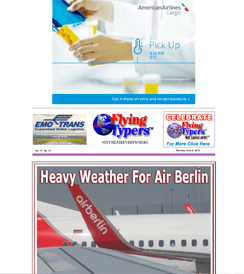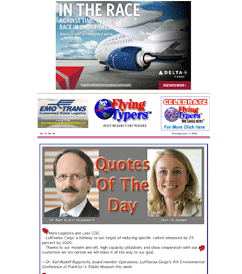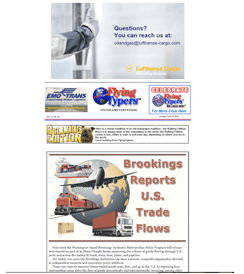 |
 |
 #INTHEAIREVERYWHERE |
| Vol. 14 No. 50 | Thursday
June 18, 2015 |
 Sanjiv Edwards, Head of Cargo Business, Delhi International Airport, is one of those executives who give the impression of being calm - all the time. When this correspondent met him at the Import Cargo Complex at Delhi Airport, there were people rushing out from their chambers on the first floor. Delhi had just felt the tremors of an earthquake - this was one of the aftershocks of the big one in Nepal - and there was an atmosphere of panic. But there was a cool and collected Sanjiv Edwards coming out of a meeting. Yes, he had felt the tremors and what was the point of hanging around in the corridors. Let's start talking and if the need arose, we would run out, he said. The cool Sanjiv Edwards is a bundle of energy. His initiatives at Delhi airport has seen cargo volumes going up over the years. His pro-active approach will come in handy at TIACA. Welcome Sanjiv Edwards, Chairman,TIACA and may we say, Prince of the future of that august organization . . . FT: Given your existing commitments at DIAL, what encouraged you to take on the workload in the Association? SE: I am delighted to take up this position since it provides me the opportunity to work with an excellent Board and a very committed TIACA team, to serve the Industry. TIACA is a global organization, with a membership base that truly reflects the entire Air Cargo Supply Chain. I was driven by my passion for this Industry and to see it taking its rightful position as the fastest mode of commercial transport. TIACA provides an excellent platform for all stakeholders to work together in synchronizing the operations and removing the inefficiencies. The Air Cargo community globally needs to be more engaged to be able to drive the change and pass on the benefit to customers. Another driving force behind this decision has also been the desire to present India as an emerging leader in the Global Logistics arena. FT: What do you hope to bring to TIACA in your role as Chairman? SE: In my role as TIACA Chairman, I want to build a strong and engaged membership base, we need to be actively practicing and promoting our three pillars of Networking, Knowledge and Advocacy. We have excellent industry events namely the Annual Executive Summit and the biennial Air Cargo Forum, the next Air Cargo Forum in October 2016 in Paris will provide a huge platform for industry to converge and transact business and I will be focusing on a successful delivery of the same. We have recently launched the very successful course "Air Cargo Professional Development Program" for Cargo Professionals which has been well accepted by industry, I would like to further strengthen our education programme. On the Advocacy we will continue to take up issues of global significance as well as issue of significant impact in major regional markets. FT: What do you see as the biggest challenges facing the industry today? SE: The biggest challenges are lack of standardization of procedures across stakeholders and countries. Secondly the resistance to change, we need to be embracing technology and related initiatives with open arms, to maintain the competitive edge of air freight. IT can play a major part as an enabler for efficient Air Cargo Transportation and reduction in the processing time on ground. We need to utilize the available technology and initiatives e.g. E-AWB, E-Freight etc. to our advantage. Thirdly ensuring safe and secure transportation is also an area that requires due focus and importance, we need to be playing our part. FT: How do you believe industry regulators view TIACA and are they now more willing to consult with the Association or listen to its views? SE: We have always enjoyed a close working relationship with the Regulators by becoming a bridge for the Industry and actively engaging in providing inputs for policy design and execution. In our ACF last year at Seoul we had senior representation from WCO, ICAO and TSA in edition to many others, engaging with industry through TIACA we are very appreciative of their recognition of TIACA as unique industry association representing the voice of the entire Cargo Supply Chain FT: What does Delhi International Airport Limited and India get from your position in TIACA? SE: DIAL has always been a leader in its field and has recently been awarded as the no 1 Airport in the world by ACI in its category. DIAL has also taken the lead in promoting the Air Cargo industry in India by investing in State of the Art Infrastructure, Benchmarking performance to global standards and becoming the first Airport in India to be certified by IATA as e-freight compliant. My appointment to this prestigious position has once again reaffirmed DIAL's commitment to contribute to the Industry by taking leadership roles. India will definitely benefit from access to global knowledge, sharing of best practices and providing an opportunity for the local industry to network with their global counterparts. FT: How can other members support the activities of TIACA? SE: TIACA has three pillars Networking, Knowledge and Advocacy, the members can definitely support by promoting each of these and proactively engaging by contributing ideas , efforts and resources . We have a very active way of engaging and ensuring member's participation by working through specific subject related committees and members are welcome to join committees like Industry Affairs, Event & Business Development, Education & Research etc. we would request members to highlight issues that can bring improvement in industry that impact areas of simplification of procedures, safety and security, usage of technology and Market access etc. FT: Do you believe industry leaders have a responsibility to put something back into the industry, using their knowledge, expertise and contacts? SE: Industry leaders have a responsibility for the ensuring the health and growth of the Industry, this can only be achieved when they are willing to contribute their knowledge, experience and strength of the strong networks. We owe our success to the industry and we need to play our part in ensuring growth and sustainability of industry. One of the key areas we need to focus is on developing next line of leadership. Developing and retaining talent should be a major area for focus for industry leaders. FT: What are your aims for TIACA over the next couple of years? SE: My priorities will be to increase the global reach of TIACA, to ensure we have strong and engaged membership, while taking up issues that bring value to the Industry and the membership. We should become a strong voice for advocacy, reflecting the true nature of membership base. Tirthankar Ghosh |
Paris Blockbuster . .
. Maybe the news is not the biggest ever
for Boeing, but the order for 20 B747-8F aircraft
from Volga-Dnepr Airlines, Russia's leading air
cargo carrier, has breathed life into the legendary
airplane whose sales have been mostly moribund recently.
|
 |
| SV
June To Delhi Elsewhere
Keku Gazder – Regional Director Cargo, Indian
Sub-Continent for Saudia Cargo said freighter
services have been added from New Delhi to Riyadh
and Jeddah this month. |
 |
|
A
common saying goes, “you can’t see
the forest for the trees.”
|
|
If
You Missed Any Of The Previous 3 Issues Of FlyingTypers
|
| Forward this email to a friend |
| Update Profile To continue receiving FlyingTypers |
Publisher-Geoffrey
Arend • Managing Editor-Flossie Arend • Associate
Publisher/European Bureau Chief-Ted Braun Film Editor-Ralph Arend • Special Assignments-Sabiha Arend, Emily Arend • Advertising Sales-Judy Miller |
|

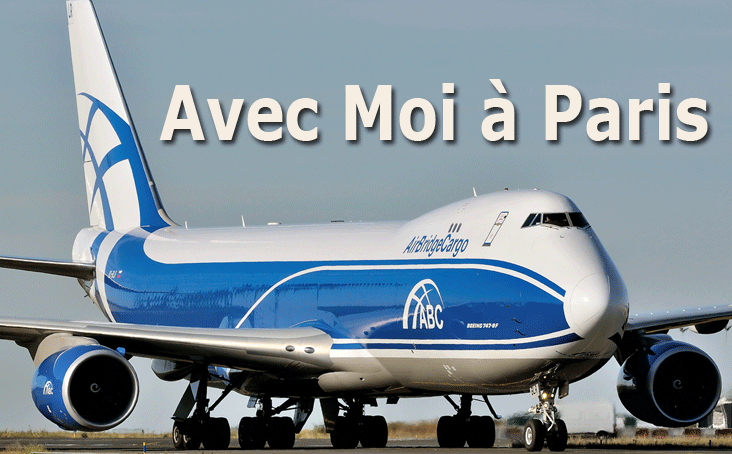

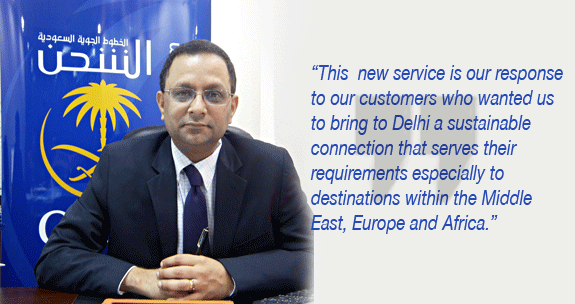
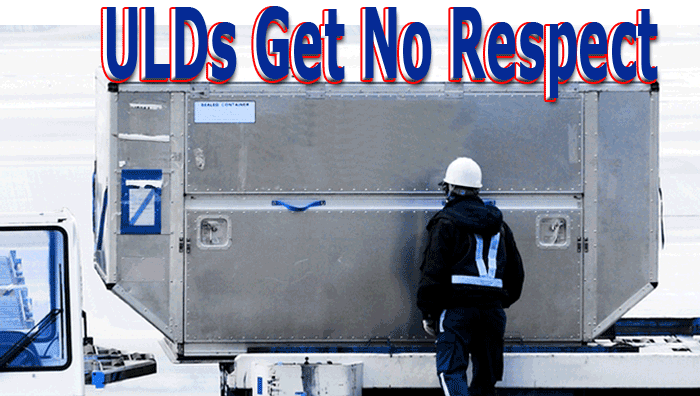

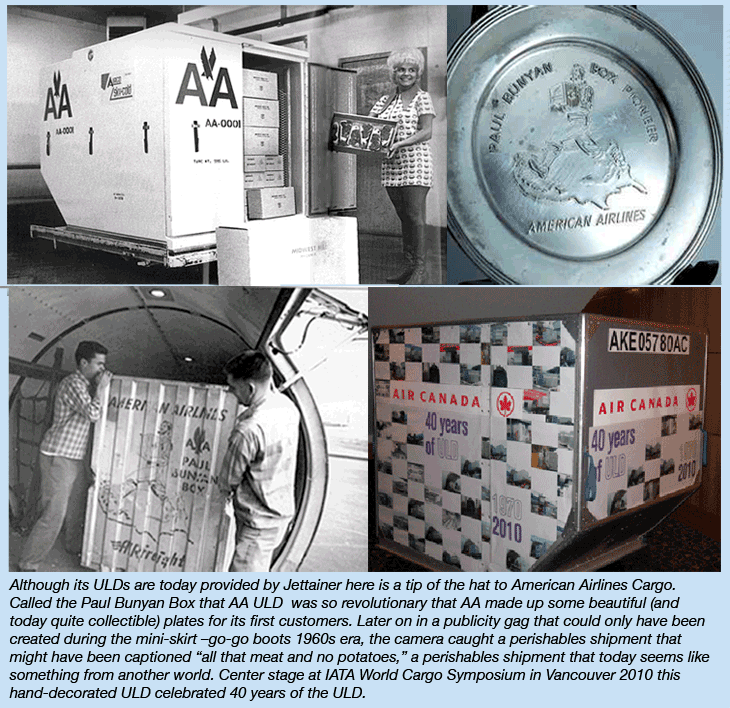
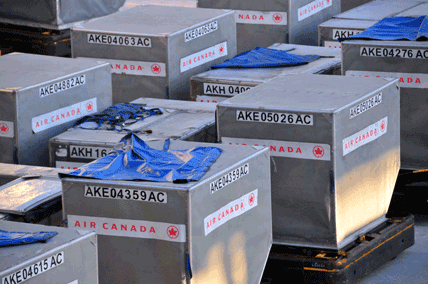 Essentially, the
airline agrees that either the shipper or a forwarder
tenders a loaded ULD for carriage instead of loose
cargo. Because the airline saves on GHA Buildup
charges, a part of such saving is passed on to
the forwarder or shipper, (e.g. the cargo rate
is lowered).
Essentially, the
airline agrees that either the shipper or a forwarder
tenders a loaded ULD for carriage instead of loose
cargo. Because the airline saves on GHA Buildup
charges, a part of such saving is passed on to
the forwarder or shipper, (e.g. the cargo rate
is lowered). When it comes to ULDs
there a few outstanding people—like Bob
Rogers from Nordisk (right) (known for both his
drastic and knowledgeable presentations delivered
at industry meetings such as the IATA WCS and
the TIACA ACF)—who have dedicated their
professional lives to raising awareness about
the ‘unknown entity ULD’ and have
played a pivotal role in spreading the word. Urs
When it comes to ULDs
there a few outstanding people—like Bob
Rogers from Nordisk (right) (known for both his
drastic and knowledgeable presentations delivered
at industry meetings such as the IATA WCS and
the TIACA ACF)—who have dedicated their
professional lives to raising awareness about
the ‘unknown entity ULD’ and have
played a pivotal role in spreading the word. Urs
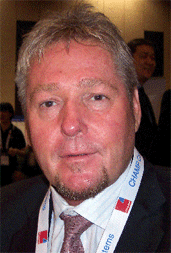 Wiesendanger
(left) from Air Canada who also serves as president
of the organization
Wiesendanger
(left) from Air Canada who also serves as president
of the organization 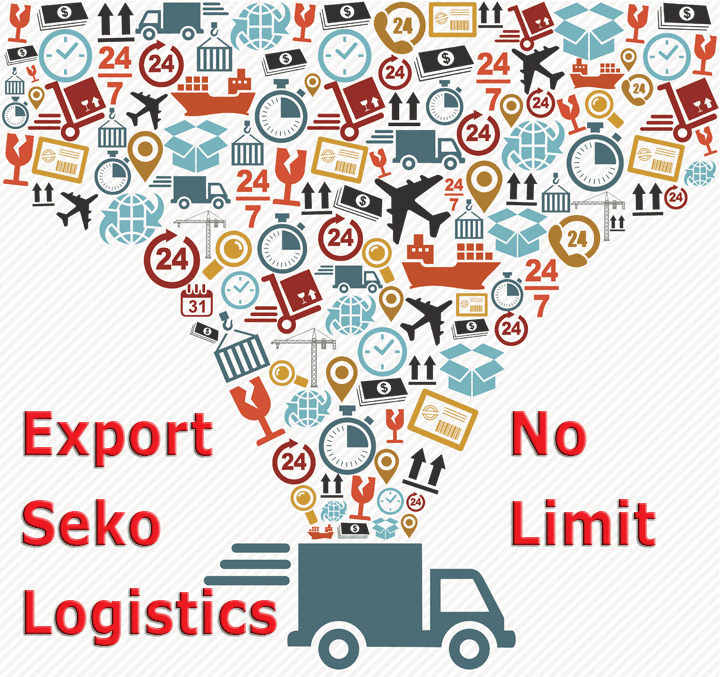
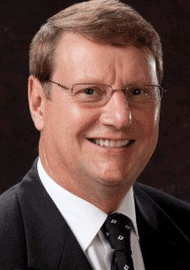 William
J. Wascher has to be one of the most clued-in logistics
executives in the U.S. With strategic reach and
a depth of knowledge across markets rarely encountered,
the president and CEO of Seko Logistics sprinkles
his insights into cargo markets. He is keen to talk
air freight at the moment, not least because it
is proving a happy hunting ground for his Chicago-based
company.
William
J. Wascher has to be one of the most clued-in logistics
executives in the U.S. With strategic reach and
a depth of knowledge across markets rarely encountered,
the president and CEO of Seko Logistics sprinkles
his insights into cargo markets. He is keen to talk
air freight at the moment, not least because it
is proving a happy hunting ground for his Chicago-based
company.